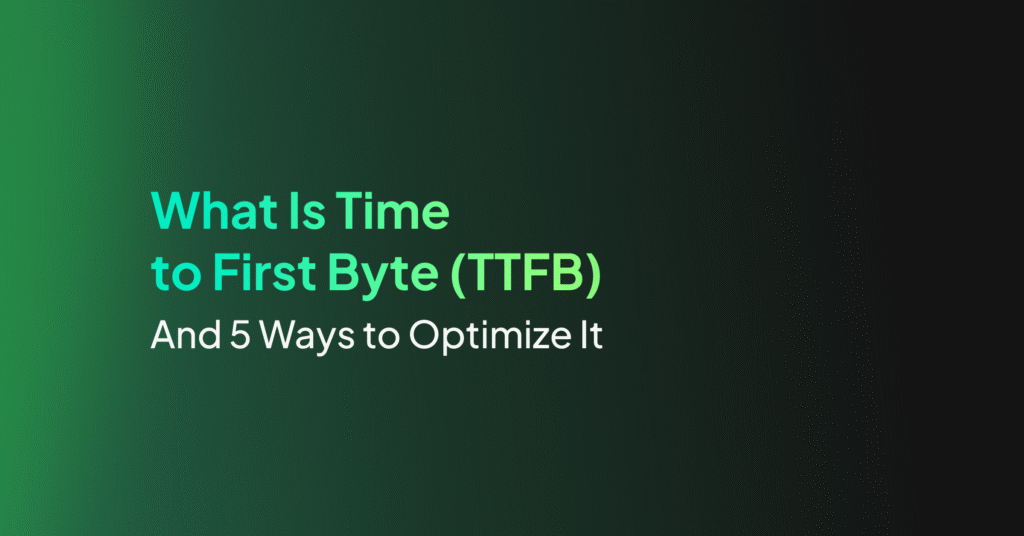What Is Page Load Time and How to Make Your Pages Blazing Fast

Why Is Page Load Time Important?
User Engagement and Customer Satisfaction
Page load time is a crucial element in providing a positive user experience. Today’s internet users are accustomed to fast, seamless online experiences. A slow-loading web page can lead to frustration, a decrease in user engagement, and even a loss of potential customers.
When a website loads quickly, users are more likely to stay, browse, and interact with the content. Fast-loading websites provide a smooth and enjoyable user experience, increasing the chances of users returning in the future.
Bounce Rate
Bounce rate is another critical metric influenced by page load time. It refers to the percentage of visitors who leave a website after viewing only one page. A high bounce rate often indicates that users are not finding what they need or that the website’s performance is subpar.
Slow page load time is a common cause of high bounce rates. If a web page takes too long to load, users are likely to leave and try another site instead.
SEO and Search Engine Ranking
Google and other search engines use web performance metrics as a significant factor in their algorithms to rank websites. Google, specifically, measures page load time using Core Web Vitals metrics like Largest Contentful Paint (LCP), First Input Delay (FID), and Interaction to Next Paint (INP).
Websites with faster load times are prioritized and ranked higher in search results, leading to increased visibility and organic traffic. This is because search engines aim to provide users with the best experience possible, and faster websites contribute to that goal.
A fast page load time also has a positive impact on the crawl budget, the number of pages a search engine will crawl on your website within a specific timeframe. Faster websites allow search engines to crawl more pages, improving the chances of your content being indexed and appearing in search results.
How Is Page Load Time Different from Response Time?
Page load time and response time are two crucial, but distinct, performance metrics. While page load time refers to how long it takes for a web page to fully display its content, response time refers to how long it takes for the server to respond to a browser’s request.
Response time is a component of page load time, but it doesn’t account for everything that happens when a web page is loading. It only measures the time for the server to start sending data, not the time it takes for the browser to display the content. Additional elements that make up page load time are the time required to download files to the browser, and the time needed to render and display content on the client side.
How Does the Browser Load a Web Page?
The process of loading a web page involves several steps:
- The user types a URL or clicks a link.
- The browser accesses a DNS server to identify the IP address represented by the web address.
- The browser sends a request to the server where the web page is hosted.
- The server responds by sending back the web page’s files, including HTML, CSS, JavaScript, images, and any other content.
- Once the browser receives these files, it starts to parse the HTML, which is the backbone of the web page. The HTML includes instructions for loading other resources, like CSS for styling and JavaScript for functionality. The browser also renders images and other media as instructed by the HTML.
- While this process is happening, the browser also builds the Document Object Model (DOM), a representation of the web page’s structure. Once the DOM is complete, the web page is considered fully loaded.
Measuring Page Load Time
Time To First Byte (TTFB)
A critical metric when measuring page load time is the Time to First Byte (TTFB). TTFB is the duration from the client making an HTTP request to the moment the client starts receiving the first byte of data from the server. This measure reflects the responsiveness of your webserver and the network connectivity between the client and the server.
A high TTFB can indicate problems with the server setup, network issues, or inefficient application logic. By optimizing these areas, you can significantly reduce TTFB and improve your overall page load time.
Round-Trip Time (RTT)
The Round-trip time (RTT) is an essential measure of latency, the time taken for data to travel from the source to the destination and back. This measure can give us a fair idea of how quickly a web page will load for a user, depending on their geographical location and the location of the server hosting the web page. The longer the RTT, the longer it takes for the page to start loading, leading to a slower page load time.
By measuring RTT for your web pages under realistic conditions, you can make informed decisions about server locations and the need for a Content Delivery Network (CDN). The closer the server to your end users, the lower the RTT and the better page load times will be.
Core Web Vitals
Google’s Core Web Vitals are a set of specific factors that Google considers important in a webpage’s overall user experience. These metrics are part of Google’s page experience ranking factor, and are instrumental in understanding and improving page load time. Two Core Web Vitals metrics that are closely related to page load time are:
- Largest Contentful Paint (LCP): This metric marks the point in the page load timeline when the main content has likely loaded. A fast LCP helps reassure the user that the page is useful. For a good user experience, LCP should occur within 2.5 seconds of when the page first starts loading. Factors influencing LCP include server response time, render-blocking JavaScript and CSS, resource load times, and client-side rendering.
- First Input Delay (FID): Measures interactivity. It quantifies the experience users have when trying to interact with unresponsive pages. A low FID means the page is more interactive and responsive to user input. To provide a good user experience, pages should have an FID of less than 100 milliseconds. Improving FID involves minimizing (or deferring) JavaScript, removing unnecessary third-party scripts, and using a web worker.
5 Steps to Make Your Pages Blazing Fast
1. Optimize Image Size and Format
Images often account for most of the downloaded bytes on a web page. Therefore, optimizing images can significantly reduce the load time. Start by reducing the size of your images without compromising on their quality. Tools like Adobe Photoshop or free online image compressors can be handy for this task. Online platforms like Cloudinary or Imgix can provide automated image optimization for larger websites.
Next, consider the format of your images. JPEGs are generally smaller and load faster than PNGs, making them a better choice for large images or photographs. Make sure to select the appropriate level of JPEG compression, or use a tool to optimize it automatically. Also consider using next-generation image formats like WebP, which provide the same level of quality at a much smaller file size.
2. Optimize Dependencies
Every web page has dependencies—external resources that need to load for the page to function correctly. These may include CSS files, Javascript files, images, fonts, and more. The more dependencies a page has, the slower it tends to load.
To optimize dependencies, start by identifying all the resources your web page requires. Then, remove any unnecessary ones. For instance, you might find that some JavaScript or CSS files are no longer in use or can be combined into a single file. Minify JS and CSS files to reduce their size.
3. Optimize Caching
Caching is a technique that stores copies of files in a cache, or temporary storage location, so that they can be accessed more quickly. When a user visits your website, the cached version of the page can be served, reducing the server’s work and improving the page load time.
To optimize caching, ensure that your server is configured to send caching headers and that they are set for an optimal duration. For static resources like images, CSS, and JavaScript, a long cache lifetime can significantly improve load times for repeat visitors.
4. Use G-Zip Encoding
G-Zip encoding is a method of compressing web pages and their related files to reduce the amount of data that needs to be transferred over the network. Enabling G-Zip encoding on your server can significantly reduce the size of the transferred response and consequently improve the page load time.
5. Reduce HTTP Requests
A web page’s load time can be significantly impacted by the number of HTTP requests it makes. Each file on a page, such as images, stylesheets, scripts, and fonts, typically requires a separate HTTP request. The more requests a page makes, the longer it takes to load, especially on networks with higher latency.
To reduce the number of HTTP requests, consolidate files wherever possible. Combine multiple CSS or JavaScript files into single files. This reduces the number of HTTP requests and can also make maintenance easier. Similarly, consider using CSS sprites to combine multiple images into one. This way, multiple images (like icons or navigation elements) can be loaded with a single request.
Using modern web technologies like HTTP/2 can also help. HTTP/2 allows for multiple files to be loaded in parallel over a single connection, which can significantly reduce the time spent on establishing multiple connections and hence improve page load times.
Improving Web Performance with Coralogix
We understand the importance of your users having a positive experience on your website, that’s why our Real User Monitoring features give you insights into your core web vitals and more! Learn more about Coralogix




